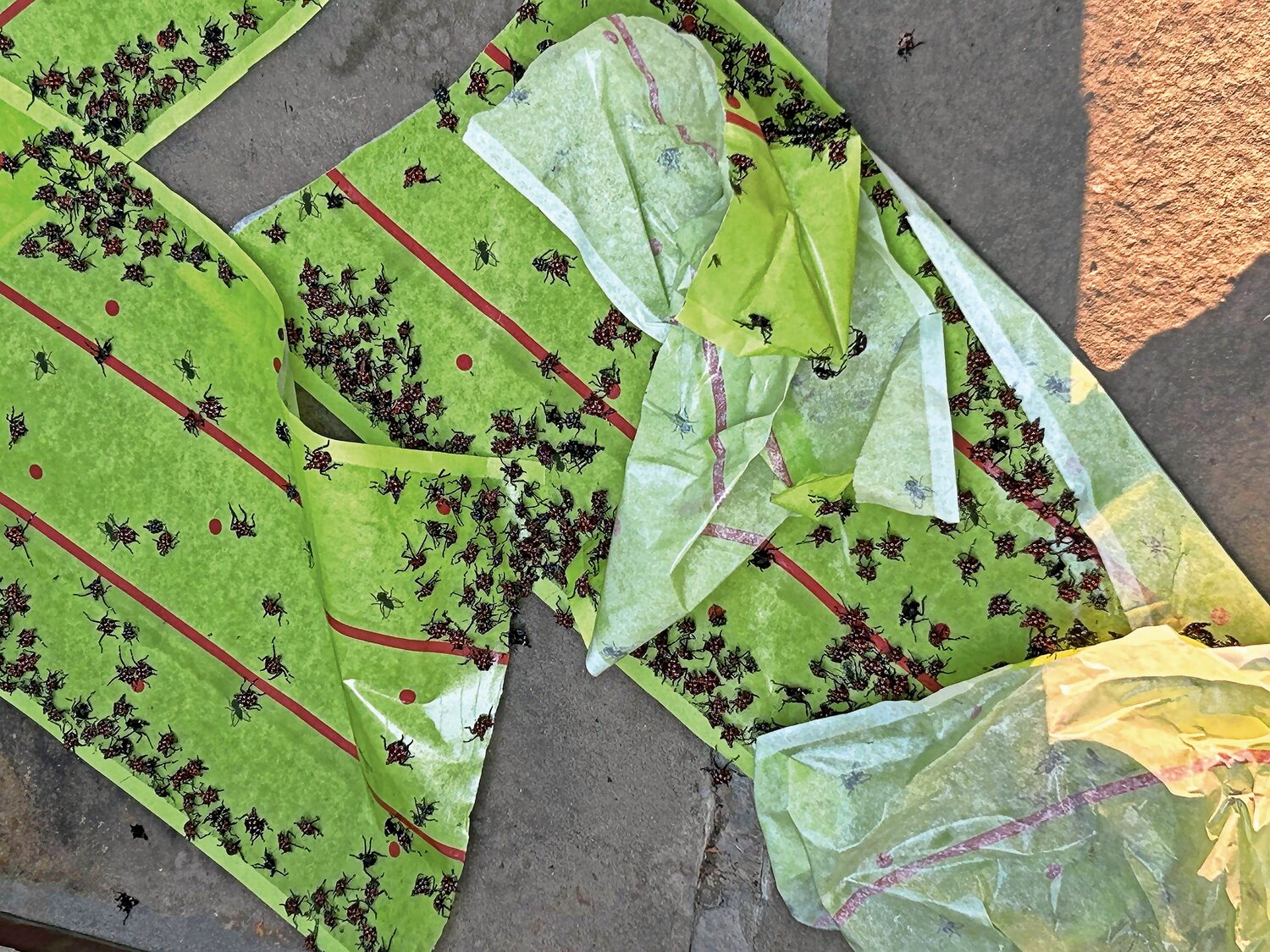This year, lantern fly hunting season is a busy one in greater Riverdale
From nets to chemicals, there are number of ways to rid ourselves of the pest
What’s black, red, with white spots all over its body? Unfortunately for Riverdale residents, it’s an invasive species. The spotted lantern flies, also known as hitchhiking insects, show no sign of putting their thumbs down and pretty soon the nymphs will spread out their wings marking adulthood.
The insect indigenous to parts of China and Vietnam was first discovered in the United States in 2014 after it was found in Pennsylvania. The bug has since hitched its way to Maryland, New Jersey, Delaware, Long Island, and the five boroughs of New York City.
Their population in Riverdale has seemingly only increased over the years, with residents finding them at Van Cortlandt Park, Spuyten Duyvil train station, and on their porches.
The good news is these bugs pose no harm to humans or their pets. The bad news is these bugs love to feast on your trees, fruits and crops. It is for that reason the U.S. Department of Agriculture actually encourages the public to crush and stomp on them.
One local grassroots organized garden club of about six members in North Riverdale has taken the matter into their own hands. Annette Diiorio, a member of the club, told The Riverdale Press how her children were excited to squish the bugs after learning their effect on the ecosystem.
It was Ann Lane, one of the founders of the club, who came up with the idea to go out with the kids.
“Five of the kids, Annette and I went out a week ago,” Lane said. “We used spray bottles of vinegar. We found a lot of nymphs on the plants and stomped on them.
“We did it for over an hour. The kids could’ve kept doing it.”
The kids would spot lantern flies in rose bushes and grape vines. There could be 10 lantern flies that jumped off a rose bush, Lane explained, and the kids would be able to see exactly where they landed.
They would squish, shake, and spray as many lantern flies with diluted vinegar as they could.
When Diiorio’s children were asked why they wanted to kill the lantern flies, Barak, 10, answered “because they kill trees.” Barak also loves to save worms after it rains by throwing them off the sidewalk and into the grass.
Diluted vinegar is just one way Riverdale residents have tried to kill lantern flies. Residents have told The Press, they’ve used their boots, bowls of vinegar, dish soap, Pine-Sol, neem oil, glue traps, fly swatters, and one resident has even used a blowtorch to eliminate them. But is there an ideal way?
Sean Tarantino, a horticulture supervisor at the Bronx Zoo, told The Press about how the zoo deals with the spotted lantern fly.
“For the lantern fly, we have to think about everything,” Tarantino said. “When they’re active, their nymphs, adult periods, how they reproduce.”
The zoo uses netting traps that are designed to trap insects that have climbed the bark of a tree, so that when they come down they drop into the bag.
These traps are checked about two times a week and have proven to be a great way of passive mitigation. In addition to giving them an idea of how many lantern flies there are, the nets also impose no harm to the trees as chemicals might.
In the areas that are harder hit, the zoo uses a basic insecticide soap with salts of fatty acids. On contact this causes the lantern fly’s exoskeleton to break up, killing them relatively fast. The soap is also readily available at any garden store, Tarantino said.
Vincent Galatolo, New York Botanical Garden’s Director of Plant Health, has urged the removal of the tree of heaven, another invasive species that is one of the lantern flies’ favorites to feast on. They’ve found that the eradication of such species has been conducive in controlling the lantern flies populations.
Part of the challenge of the lantern flies is how they prolifically lay eggs in a variety of places. Galatolo has encouraged the study of the bug’s life cycle.
“It’s important to note they only have one life cycle a year, to our benefit,” Galatolo said. “Other invasive pests have multiple.”
Jeffrey Dworkin, president of Ecology Exterminating, which provides services in Riverdale, said they get calls about lantern flies five to seven times a week.
They deal with infestations with vacuums, a green insecticide called essentria, and by putting a band of double sided tape on tree bark. In addition they will get rid of bushes, shrubberies and weeds that may contain the bugs.
“We’ve seen them go under the tape. It’s not fool proof,” Dworkin said. “Nothing is.”
They can get rid of one batch of lantern flies just for another batch to come back the next week, which is why the company tells customers there is no long-term guarantee.
Brian Eshenaur, senior extension associate at Cornell University’s NYS Integrated Pest Management Program, explained someone could kill all the nymphs in an area and there would still be hundreds of adults later in the season because they’re always on the move.
He also said with recent reports of adult sightings in New York City, residents can expect the lantern fly population to get “much higher” this year.
“It’s a landscape problem, an individual yard pest that we’ll learn how to live with to some extent,” Eshenaur said.
“We know there’s a light at the end of the tunnel, that the population will decrease.”
Eshenaur has observed that lantern fly populations have decreased in Pennsylvania after knocking back some tree of heavens, leading them to believe this is a good combative force. In addition, there’s been an observed buildup of predators like the praying mantis, wheel bugs, and certain types of spiders that kill lantern flies.
He says residents can expect the same to happen in New York.









